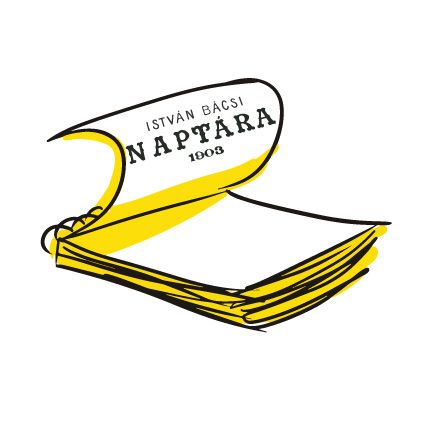
István bácsi 1903. évi naptára a Laczkó Dezső Múzeum könyvtárának közel 150 darabos magyar és német nyelvű kalendáriumgyűjteményét reprezentálja. Ezek közül a legrégebbit 1661-ben adták ki Kürner Jakab János nyomdájában, de 20. század eleji példányaink is vannak.
A kalendárium egy évre szóló nyomtatott naptár, mely főleg a 18. századtól az olvasói igényeknek megfelelően más funkciókkal is bővült. A napok rendjén kívül megtalálhatók a naponkénti csillagászati változások, a mindennapi gyakorlati életvitelhez szükséges egyéb információk, tanácsok, szórakoztató és általános jellegű ismeretterjesztő, illetve aktuális tájékoztató olvasmányanyagok. Legnépszerűbb István bácsi közepes méretű naptára volt. Ez volt az első népnevelő, népművelő naptár Magyarországon. Mindent tartalmazott, ami a népnek fontos, hasznos, és erkölcsi vagy szellemi színvonalát emelhette.
A legizgalmasabbak mégis a jegyzetek számára beillesztett üres oldalak. A tulajdonos saját kézírásával szinte naplószerűen vezette fel ide az időjárás változását, a családját, gazdaságát és az őt érintő eseményeket, így a korabeli meteorológiai adatok mellett, sok személyes dolgot is megtudhatunk. Mindez egyedivé teszi az adott kalendáriumot.
Molnárné Liszi Erzsébet
könyvtáros
Erre haladjon tovább:
A restaurátor műhelyben a köpeny mögött egy tárgy korszerű restaurálásáról olvashatunk.
The “István bácsi naptára” almanac of 1903 represents a part of the Laczkó Dezső Museum’s almost 150-piece Hungarian and German almanac collection. The oldest piece is from 1661, published from the printing house of Jakab Kürner, but we have pieces that represent the early 20th century too.
An almanac is a printed calendar for one year, mainly since the 18th century, the format evolved, and its functions expanded to meet consumer demand. Other than the order of days, the daily astronomical changes, information essential to everyday life, tricks and tips, general information guides and reading materials about current events also had a place in these almanacs. The medium sized version of “István bácsi naptára” was the most popular. It was Hungary's first calendar focused on public education and cultural enrichment. It contained everything that was important or useful to the Hungarian people, and anything that could raise the ethical and intellectual standards.
Despite all of this, the most interesting parts were the empty pages that were added with the purpose of note-taking. The owner could write in the almanac in their own handwriting, almost as if they were writing a journal. Noting down any changes that affected the weather, their family, their homestead or themselves. Because of this, besides the meteorological changes of the time, we can see plenty of personal details about the people who owned these almanacs. All of these personal notes made almost each almanac completely different and unique.
Erzsébet Liszi Molnárné
librarian
Proceed to this:
In the restorers workshop, behind the restorers gown, we can read about the modern restoration process of an artifact.